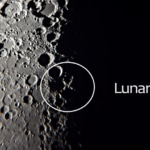Demoted! They Used to Be Planets …
We all know Pluto is no longer a planet, but did you know it's not the only object in our Solar System to get demoted? Learn more!
Many of us who grew up learning there were nine planets in our Solar System were perplexed in 2006 when Pluto, number nine, was reclassified as a “dwarf planet.” This move reduced the planetary residents of our neighborhood of space to eight, and struck the mnemonic device “My Very Excellent Mother Just Served Us Nine Pizzas” from the minds of millions of school kids.
While the reclassification came a bit of a shock, this wasn’t the first time in history astronomers changed the status of an object once thought to be a planet. Earth’s Moon, and even the Sun, were once believed to be planets, back when people held a geocentric, or Earth-centered, understanding of the universe. And they weren’t the only ones. Astronomers through the ages have been so enamored with the idea of discovering new planets that they have often hastened to declare newfound objects to be planets, only to have their pronouncements reversed at a later time. Since antiquity — but mostly in era after the creation of the telescope — moons, dwarf planets, and even asteroids have been heralded as planets, sometimes for a number of years, before their true nature was revealed. Here’s a look at a few of the most famous former planets.
In 1610, Italian astronomer Galileo Galilei discovered the four largest moons of Jupiter, Io, Europa, Ganymede, and Callisto. Now known as the Galilean moons, Galileo himself believed them to be planets and referred to them as the “Medicean Planets” in honor of his patrons, the Medici family. They were only downgraded to moons later, when their relationship to Jupiter was discovered.
Later that same century, astronomers Christiaan Huygens and Giovanni Domenico Cassini discovered five of Saturn’s larger moons, Titan, Iapetus, Rhea, Tethys, and Dione, and dubbed them planets.
In 1722, a German mathematics professor, J.G. Liebknecht, was examining Mizar, a star located in the handle of the Big Dipper, and chanced upon a faint star. With some fanfare, he announced that he had discovered a new planet, and named it “Sidus Ludoviciana” or “Ludwig’s Star” after his sovereign, the Landgrave Ludwig of Hessen-Darmstadt. But the reaction from other astronomers throughout Euorpe was universally unfavorable once they realized that Liebknecht’s “new planet” was merely a fixed telescopic star.
Between 1801 and 1807, astronomers found four large bodies, Ceres, Pallas, Juno, and Vesta, in what is now known to be the asteroid belt between Mars and Jupiter. More “planets,” Astrea, Hebe, Iris, Flora, Metis, Hygeia, Parthenope, Victoria, Egeria, Irene, and Eunomia, were discovered between 1845 and 1851. By 1854, this huge list of new planets prompted astronomers to create a new classification, asteroids, and to classify all of the newly discovered bodies as such. Ceres remained an asteroid for more than 150 years, until it was reclassified as a dwarf planet in 2006. The others remain asteroids.
Pluto was the first known trans-Neptunian object to be discovered, in 1930. It was regarded as a planet for more than 75 years, until a spate of other planetoids out beyond Neptune were discovered in the early 2000s. One of these, Eris, was discovered in 2003 and classified as a planet in 2005. Both Pluto and Eris were reclassified as dwarf planets in 2006, making Eris the most short-lived planet in our solar system.

Jaime McLeod
Jaime McLeod is a longtime journalist who has written for a wide variety of newspapers, magazines, and websites, including MTV.com. She enjoys the outdoors, growing and eating organic food, and is interested in all aspects of natural wellness.





